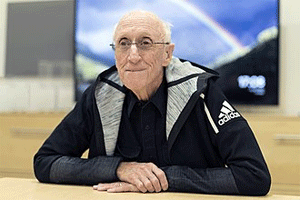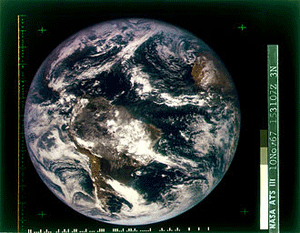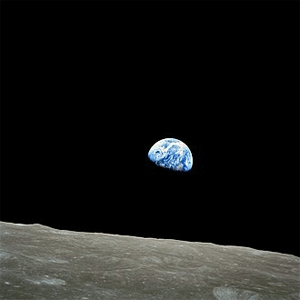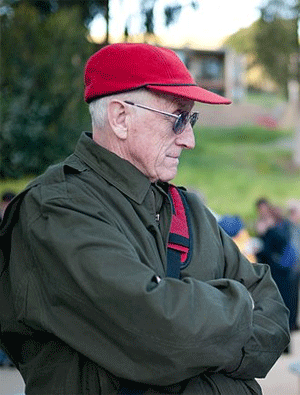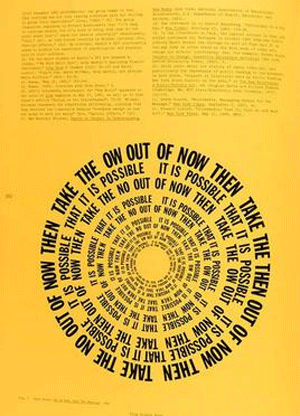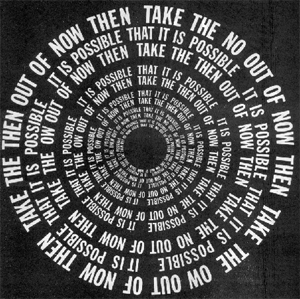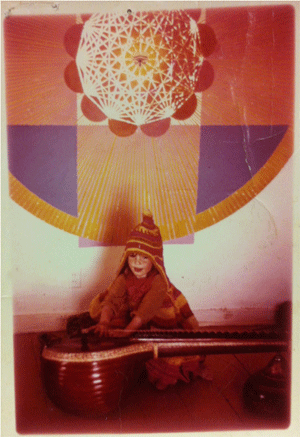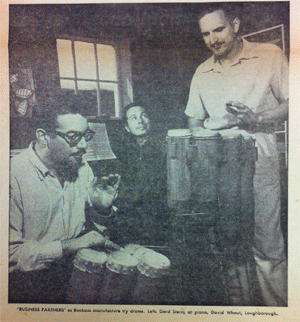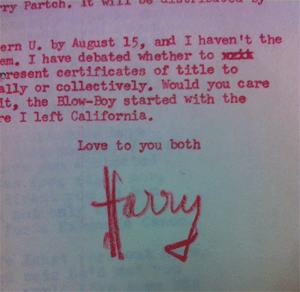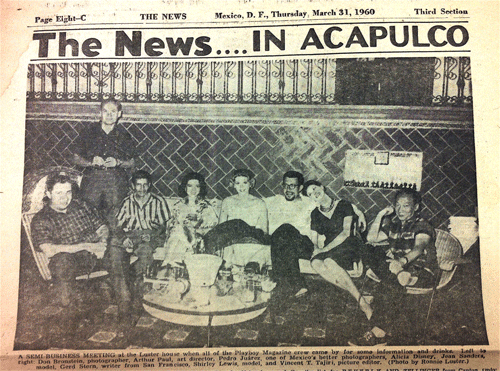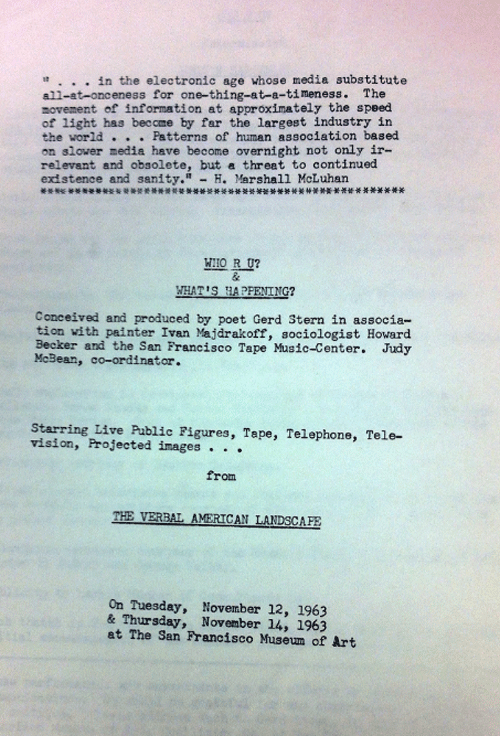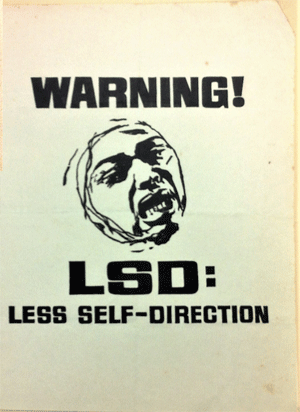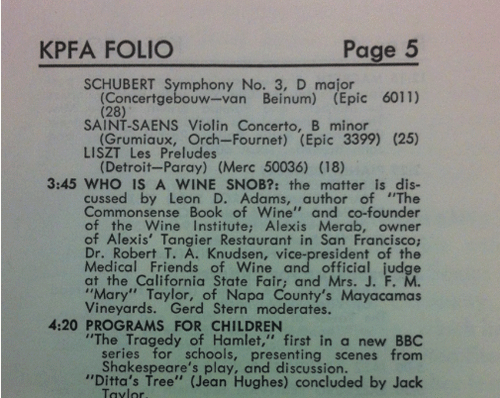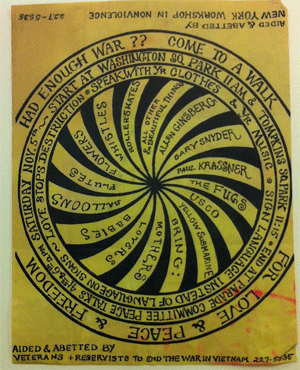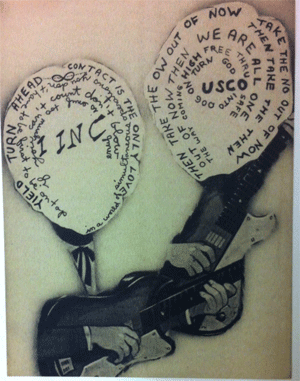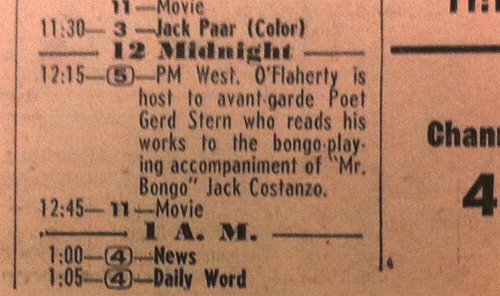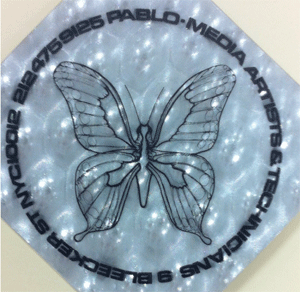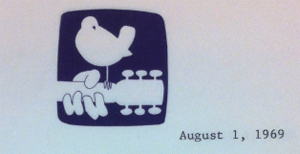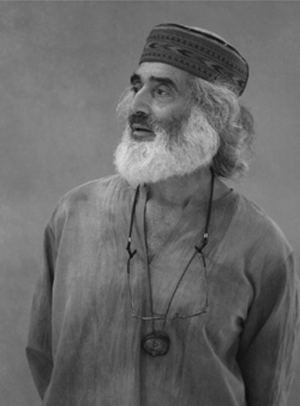Part 1 of 2
Lama Alive -- Lama Foundation: The Little Village That Could by Lama Foundation
December, 2006
NOTICE: THIS WORK MAY BE PROTECTED BY COPYRIGHTYOU ARE REQUIRED TO READ
THE COPYRIGHT NOTICE AT THIS LINK BEFORE YOU READ THE FOLLOWING WORK, THAT IS AVAILABLE SOLELY FOR PRIVATE STUDY, SCHOLARSHIP OR RESEARCH PURSUANT TO 17 U.S.C. SECTION 107 AND 108. IN THE EVENT THAT THE LIBRARY DETERMINES THAT UNLAWFUL COPYING OF THIS WORK HAS OCCURRED, THE LIBRARY HAS THE RIGHT TO BLOCK THE I.P. ADDRESS AT WHICH THE UNLAWFUL COPYING APPEARED TO HAVE OCCURRED. THANK YOU FOR RESPECTING THE RIGHTS OF COPYRIGHT OWNERS.
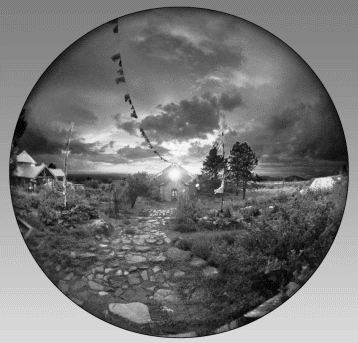
Photo Courtesy of Willie Peck © 2006
Inside This Issue:• Our New Coordinator
• The Residents
• Rebuilding Lama Foundation
• Hondo Fire, Ten Years After
• To Market, To Market
• Church of Conscious Harmony
• American University
• Sacred Sites
• Maqbaras
• Photo Album
• Donors
• 2007 Summer Schedule
• Raffle Winners
• Oral History Library
• Lama Endowment Fund
• Ways to Help
• Wish List
• Flags
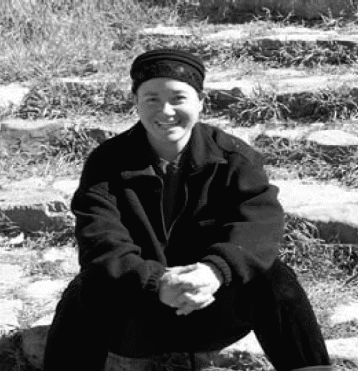 A message from our new Coordinator -- Kathy Lyons
A message from our new Coordinator -- Kathy Lyons…..So I hiked up to the Healing Tree this morning. The intention was to receive a transmission of truly phenomenal words that I could then write for the newsletter. I didn’t hear any words, but I was aware of my heart pounding in my ears, the wind through the golden aspen, and the elk with their unearthly bugling cry. Was this it?
…..So I slipped and slid down the path to the Maqbara and sat on the new flagstone seats that encircle the grave. Along with my heartbeat, the wind, and the elk, I heard zikr and dances (Ancestors, Sky People, all here today, hear my heart song. Hear my respect. Hear my love. Hear my grateful tears fall. I am truly blessed.) weaving in and out and around my memories of the now, then, and when. Was this it?
…..So I followed the path down and around to the springhouse and listened to the water bubbling up from the depths of the Mother. I listened here for a very long time. I think I fell asleep because when I opened my eyes I noticed the sun had shifted lower on the horizon and there was a trail of ants crawling over my foot. Was this it?
…..So I let the path take me to the Tipi Circle, whirl me around the labyrinth and launch me towards the ISC where I sang my thanks to the open sky and firm ground. (You are truly blessed. We are truly blessed.) The path led to the gardens, once abundant with squash, beans, corn, but now tattered with frost bitten stems and leaves. I stood there feeling a sense of awe at the limitless possibilities represented by a garden. Was this it?
…..So I ended up in the Dome, looking around at the vestiges of Chris and Rita’s wedding: the benches still covered in the white muslin that we use for our prayer flags and, here-there, a dried marigold petal, crispy, yet retaining the fragrance of summer. The wind has picked up a bit and the Dome ceiling creaks and shifts with it. It's amazing, really, how long this space has been here. The view from the window expands and contracts as I breathe in and out. I pause to listen for the heartbeat and voices of those who came before me and of those who will come after me.
Kathy Lyons
Kathy (with her husband Austin and their two cats) has been at Lama Foundation for three years and has held a number of guardianships during this time. Most recently, she has turned over the Kitchen Manager and Secretary positions to fellow Beans. Kathy eagerly anticipates the next stage in the ongoing saga of her relationship to Lama and the Mountain. She is also quite fond of Fritos (or anything salty-crunchy) and scalding hot showers.
The purpose of the Lama Foundation is to be a sustainable community and educational center dedicated to the awakening of consciousness, respect for spiritual practice in all traditions, service, and stewardship of the land.
-- Lama Foundation Mission Statement
Purring through the Winter Membership MeetingsDearest Beloved Lama Friends,
Greetings and Salutations from Lama. Here is an update of the happenings from the kitty perspective at Lama Foundation. As some of you know, Keshiva and I are still the oldest current residents here at Lama. Many have asked "what is your secret for surviving the consensus or what are now called winter membership meetings?" Simple -- the art of purring through the meetings. We have noticed that none of the human residents are bothered by our presence here in the winter. That helps as well. But, just to make sure that the circle is content with us, we keep purring.
(Keshiva) - Keeping my claws sharpened and my coat loaded with dust helps keep the humans in check.
(G) - Well, our mousing ability, or lack thereof, certainly has no impact on our membership!
(K) - Yeah, I still think it's hilarious that they have a guardianship filled to do our job as Mouse Guardians.
(G) - As a non-voting member, I do wish to express gratitude for the warm laps and good petting qualities of this year’s candidates. I feel that all of them have done an excellent job of keeping our food and water refreshed promptly, and they do a decent job of opening the doors for us. I feel this is a result of good communication skills between the human residents.
(K) - Are you saying that you’re forgiving them for leaving you trapped in the Dew Drop over night?
(G) - Oh no, that was an act of intention on my part, it was sooo cold that night, and I wanted to make sure that I stayed indoors.
(K) - That reminds me of the reputation you had before of being the tent hopper. Off from one tent to another.
(G) - O.K. Keshiva, let’s not go there.
(K) - Ah, I remember the night I went to teach Thomas Renault a very important lesson about boundaries.
(G) - Oh yes, you were quite ruthless!
(K) - Silly man, he let me right into his nice warm sleeping bag, right in between his legs. Then, hee- hee, when he wasn't focused on me, I went right for the jewels! Though I must say, the man has some quick reflexes. He did use a broomstick to create the necessary boundary between my claws and his suffering!
(G) - Well Keshiva, I'm glad that the two of you are still getting along. Oh, and I am glad that with Beth's help as mediator, we are now getting along.
(K) - Well, I think that's where the humans have it made. They can work out issues in a tenth of the time that it took us.
(G) - You know, there is the milk-offering issue I still feel needs smoothing out.
(K) - Nothing to work out G, the milk offerings are all mine!
(G) - Not if you get trapped in the Dew Drop when it's offered, hee-hee!
Blessings from GiGi and Keshiva Katz
Translated by Mouse Guardian Kunga Chokyong
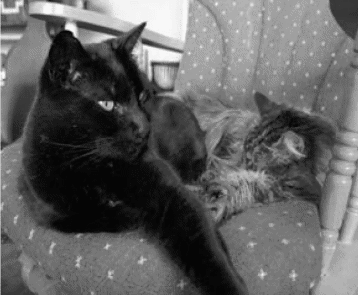
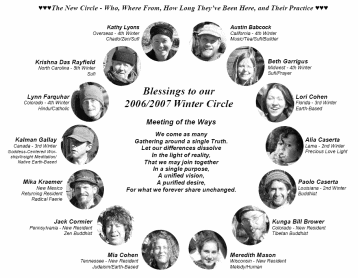
The Residents
♥♥♥The New Circle - Who, Where From, How Long They’ve Been Here, and Their Practice ♥♥♥
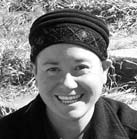
Kathy Lyons
Overseas - 4th Winter
Chado/Zen/Sufi
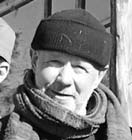
Krishna Das Rayfield
North Carolina - 5th Winter
Sufi
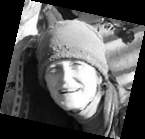
Lynn Farquhar
Colorado - 4th Winter
Hindu/Catholic
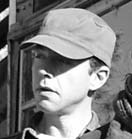
Kalman Gallay
Canada - 3rd Winter
Goddess-Centered Worship/
Insight Meditation/
Native Earth-Based
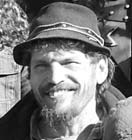
Mika Kraemer
New Mexico
Returning Resident
Radical Faerie
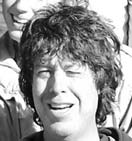
Jack Cormier
Pennsylvania - New Resident
Zen Buddhist
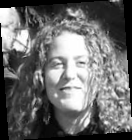
Mia Cohen
Tennessee - New Resident
Judaism/Earth-Based
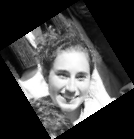
Meredith Mason
Wisconsin - New Resident
Melody/Human
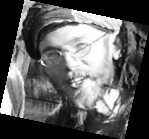
Kunga Bill Brower
Colorado - New Resident
Tibetan Buddhist
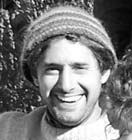
Paolo Caserta
Louisiana - 2nd Winter
Buddhist
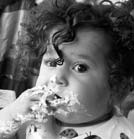
Alia Caserta
Lama - 2nd Winter
Precious Love Light
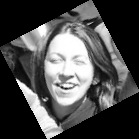
Lori Cohen
Florida - 3rd Winter
Earth-Based
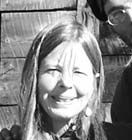
Beth Garrigus
Midwest - 4th Winter
Sufi/Prayer
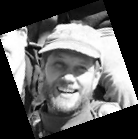
Austin Babcock
California - 4th Winter
Music/Tea/Sufi/Builder
Blessings to our
2006/2007 Winter Circle
Meeting of the Ways
We come as many
Gathering around a single Truth.
Let our differences dissolve
In the light of reality,
That we may join together
In a single purpose,
A unified vision,
A purified desire,
For what we forever share unchanged.
Alia… Precious Love LightBeing at Lama as a family is such an amazing blessing. Having so many loving people around her, Alia is really thriving, and she is so happy! She is full of noises and expressions which make us all laugh constantly. At her first birthday, August 2, Alia met her two little cousins, Gabe and Zach, who came all the way from Florida to celebrate with her. Her first words were “Ya Fattah!” (it’s true!) followed by hi, baby, Momma, and Amen! Alia started walking around thirteen months, and she loves her new mobility. We have found that she is incredibly musical! She loves Kirtan and Zikr and has a tendency to be dancing, making up songs, or finding something to create music with, especially shakers and drums.
Alia is very much a part of the Circle – she joins hands with us when we circle up and copies the hand movements during Dances of Universal Peace. One of her favorite things is being outside, whether picking flowers or playing with dirt or rocks. She has meant so much to all of us. It is such a gift to watch her and learn; she is often referred to as our teacher. Alia loves books - especially ones with animals, and was a ladybug for Halloween! She still hasn’t had a haircut, and it has been said that people pay good money for hair like hers….
Lori Cohen
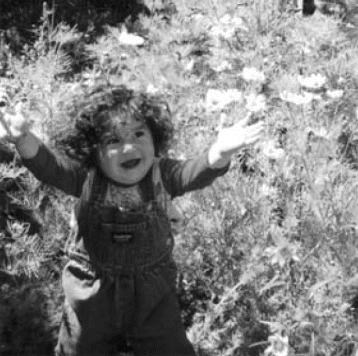
Alia Caserta - Teacher in Residence
May the sun
bring you energy by day,
May the moon
softly restore you by night,
May the rain
wash away your worries,
May the breeze
blow new strength into your being,
May you walk
gently through the world and know
its beauty all the days of your life.
Apache Blessing
***
Thank you to our departing residents!!
Erik Memmott, David Vargo,
Nathan Wherly,
Chris Daniels, & Rita McElmury
Blessings on your next journey!
***
Little trees grow where big trees fell
Prayer flags they don't burn so well
We breathe, we share, in One we're found
The Dance of Hope goes round and round
Little green trees on a mountain of love
Water and earth and sky above
We build here now and sing this song
The Dance of Hope goes on and on
It’s up to You, it's up to Me, it's up to Us:
the Dance of Hope, HOPE!
"Dance of Hope"
Lyrics by Frank Meyer, Steve Kemble, and Rob Norris
Rebuilding Lama FoundationDuring these past ten years of rebuilding, re-visioning, and rededicating Lama Foundation, a new branch of the Lama family tree has blossomed: the natural builders. They brought state-of-the-art mud and straw knowhow, a passion for after-hours fun such as dancing and drumming, and most importantly, a heart-centered dedication to re-building Lama with an emphasis on both beauty and function.
The only buildings left intact after the Hondo Fire were the Dome Complex, the Old Kitchen, the New Kitchen foundation, the Dew Drop office, and a single residence. This was barely enough to keep Lama Foundation in operation. The wintertime vulnerability of straw bales wrapped around trailers, thinly insulated tipis, yurts and domes challenged year-around residency. This in turn destabilized the on-going rebuilding effort. Nevertheless, Lama supporters threw themselves into the fray and gave until they had nothing left to give. And yet, Lama Foundation's special "magic" remained intact; new people came up the mountain each year, fell head-over- heels in love with Lama, and continued the huge task of rebuilding.
Starting in the summer of 1996, thousands of willing hands came up and felled trees along the contours of the land to preserve the top soil, planted baby trees, developed a long-term building site plan, and worked diligently to complete new buildings. For several years, the task was overwhelming because building projects during the busy summer season competed with serving summer retreats, growing food, and enjoying the fruits of Community. However, because so many believed in Lama Foundation’s vision and supported it with donations and/or their time, Lama has not only risen from the ashes, it is soaring!
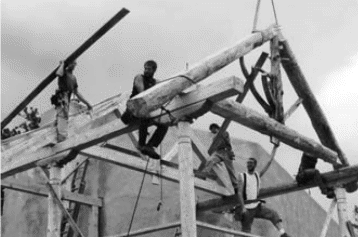
Community Center Portal - 1999 The Workshop - 2002
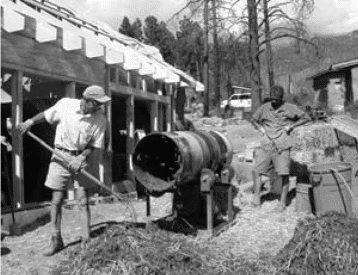
The Workshop - 2002
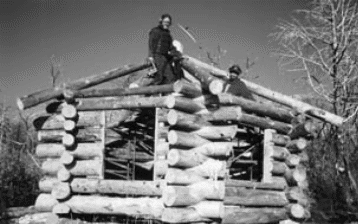
The Kanaat - 2000
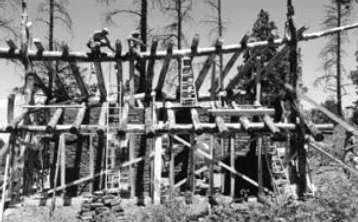
The Tree House - 1998
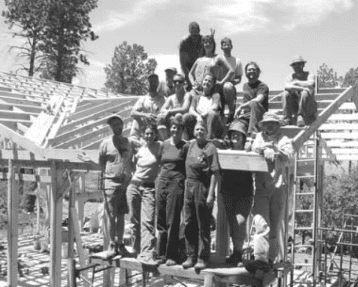
BHN Apprentices - 2006
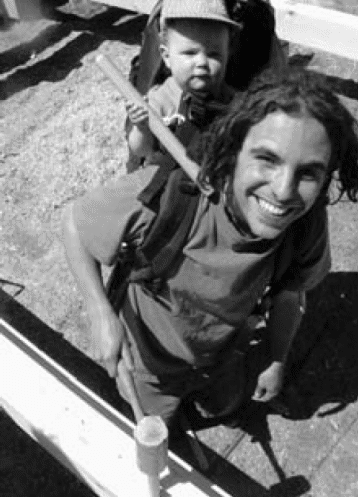
Myles & Clarity - 2002

Community Center Complex, etc.
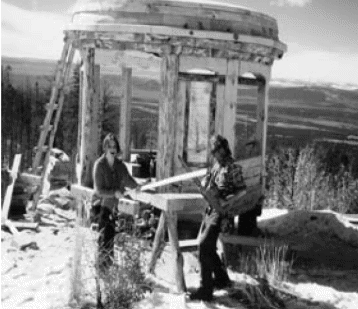
Maqbara Hermitage - 1997
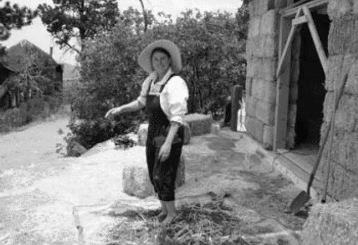
Mollie - 2006
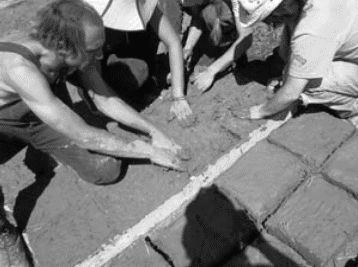
Making Adobe Bricks - 2004
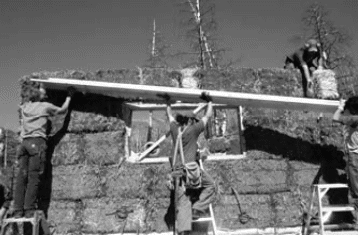
Keyline - 2003
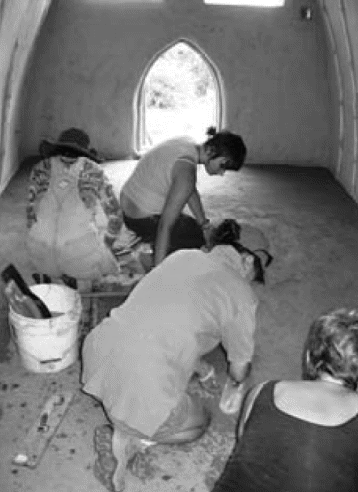
Vault One - 2004
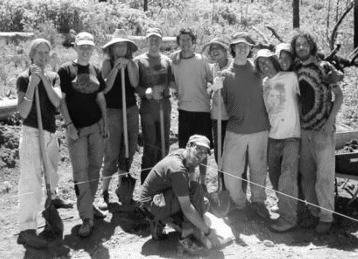
BHN Apprentices - 2003
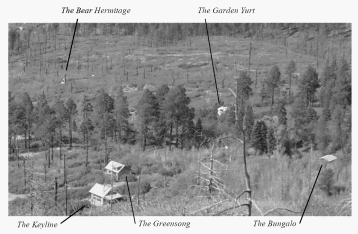
The Bear Hermitage, etc.
Ten years after the Hondo Fire, the long list of building accomplishments is impressive:
• The "Community Center" complex with new kitchen, pantry, larder, outdoor eating area, meeting rooms, and office space
• Seven straw-bale buildings
• One chainsaw-joinery building for year-round resident housing
• One summer-housing building made of strawclay
• One chainsaw-joinery hermitage
• One straw-bale hermitage
• Three important infrastructure straw-bale buildings (a recycling materials building, a woodshop/workshop, and a land-tool storage building)
• Some of the ISC complex has been rebuilt.
In 2007, we are planning to finish and occupy another straw-bale vault for year-round housing and also the straw-bale Cottage Industries Building, which includes a studio for making prayer flags and other hand-made Lama products, office space, and a "Lamassary - Love Emporium" retail facility. These days Lama Foundation resembles a small village as seen from the old High Hermitage site. Not only has Lama's ever-changing community completed some one and a half buildings each year (and we're still going), but each building has unique details that reflect the hearts of the many hands who gave so fully of themselves.
A few important guiding principles were adhered to while rebuilding. The "Lama Foundation Site Plan" (written in 1998-1999) provided an important over-all perspective in harmoniously siting buildings with the surrounding landscape, road access, and overall mapping of Lama. An ever- deepening understanding of straw-bale construction together with passive-solar design has proven to be an inexpensive and environmentally-sound method of creating new buildings. Building projects have been overseen by building professionals in conjunction with Lama community members, and so we continue to learn how to accomplish each project a little bit better. The result is a "new and improved" Lama Foundation with warmer buildings, a more modern utility infrastructure, and vast spaces of land left untouched. One might say that the Hondo Fire catastrophe provided an opportunity to upgrade.
While there are many accomplishments, Lama Foundation is still lacking adequate indoor summer housing for the many visitors who do not tent, and we are in need of funds to complete the Cottage Industries Building, which will greatly enhance Lama's ability to generate year-round income. So, we will continue to rebuild.
Thank you to everyone for your continued support. Rebuilding Lama Foundation is a community effort, and we absolutely could not do it without you!
Blessings, Austin Babcock
Magnificent Manifestations Of Your Generosity!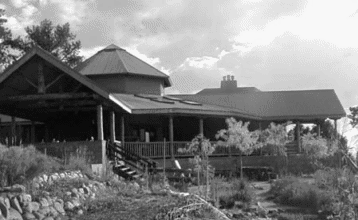
The Community Center Complex
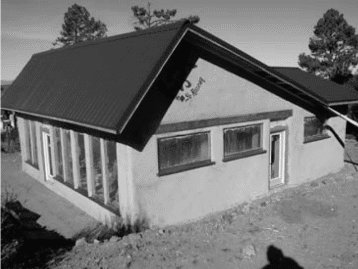
Flag Mountain Cottage Industries
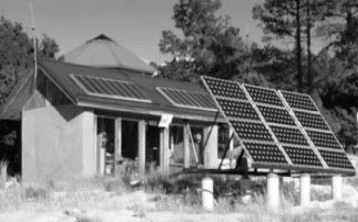
The Solar Shed & Panel Array
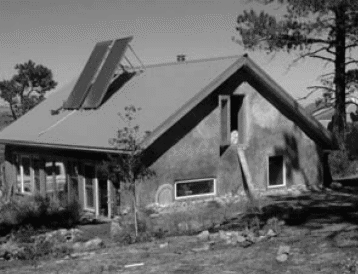
The Workshop
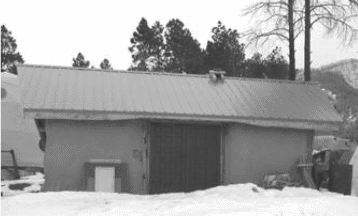
The Recycle & Storage Shed
Hermitages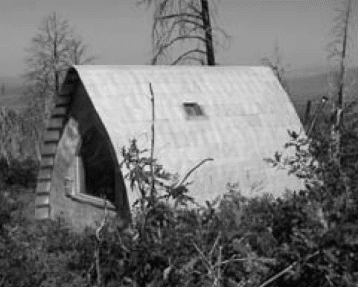
The Maqbara Hermitage
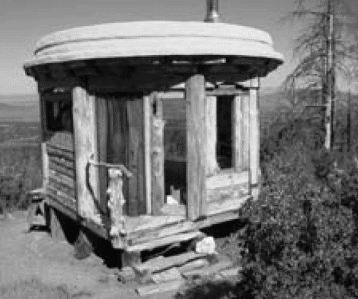
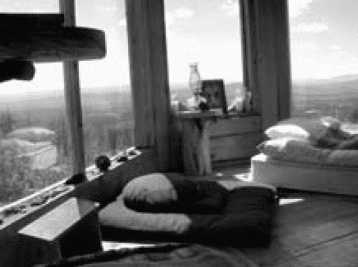 Housing
Housing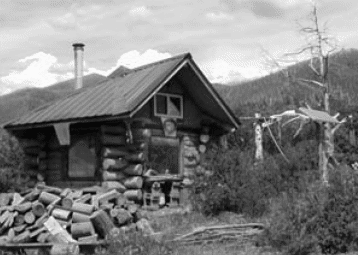
The Kanaat
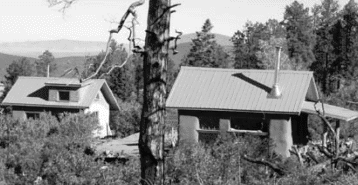
The Greensong and the Keyline
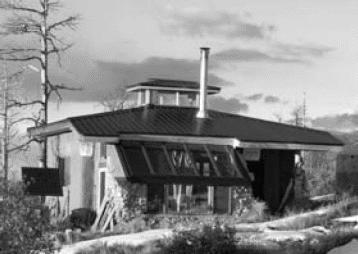
The Bluebird
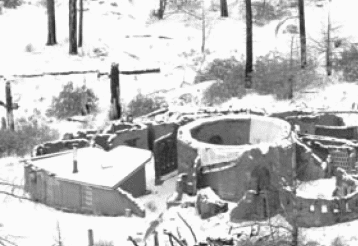
The ISC
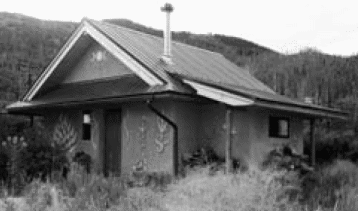
The Eco Nest
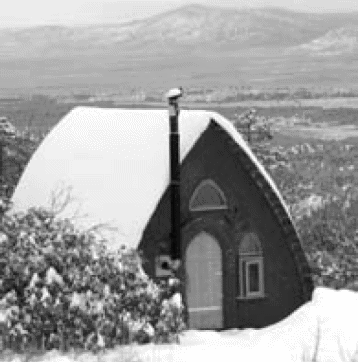
Vault One
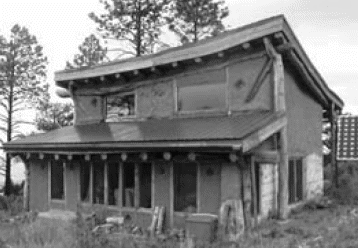
The Tree House
The Hondo Fire, Ten Years AfterYesterday was gorgeous with the Mountain displaying its full autumnal splendor. The reds, browns, and bronzes of Gambel’s oaks are more varied and vibrant this year, perhaps due to our abundant spring and summer rains. Oaks have replaced ponderosa pine as the dominant plant species after the Hondo Fire, and they seem to huddle together in clumps separated by grassy areas and pathways.
Immediately after the burn, the Land Restoration Team was primarily concerned with retaining the soil that had previously been held in place by the montane vegetation. Our hastily constructed check dams and erosion barriers functioned well to preserve a healthy substrate that now supports a much greater variety of plant life than was present pre-fire.
Rico Zook, Lama Foundation’s Land Manager for several years, said, “The land looks good now, and I am pleased on many levels. It is normal for oaks to move in after a fire, but they could be cut back to speed up the return of the ponderosas. In the near future, Lama will have several options, such as thinning the aspen grove to manage its health.”
The meadow area behind the Main Dome was the first area to fully recover. It is filled with thick grasses, oaks, and seasonal wildflowers, including bursts of purple asters this fall. Yellow-flowered chamisa shrubs line the roadway leading up to Central. Walking along the Maqbara path, I was delighted by the contrasting colors of leaves in transition: yellow snowberries, red wild roses, and yellow-green deer brush. Occasional ponderosa pine seedlings provided a refreshing dash of vivid green against the drabber grasses.
Many planted ponderosa saplings adorn the Maqbara Hill, some of them four feet high. Most of the burned pines on Foundation property have been felled by chain saw or the gusting winds. Yet a dead forest still stands in the Mountain’s upper reaches, towering like blackened grave markers. The land is more open and spacious now, with stunning views of the gorge and surrounding country, yet also possessing a rawness that urges residents and visitors to search ever more deeply within and without.
Resident Lynn Farquhar, head of the Land Team said, “All the rain this year was heavenly. The Mountain has been exploding with asters that combine with the yellow sunflowers to make an eye- popping spectacle.” She noted that mule deer, elk, black bear, raccoons, and bobcats are much more numerous in the post-fire landscape. The bird life has also become more varied with bluebirds, hawks, magpies, flickers, and ravens frequently seen.
The aspen grove has come back full force with trunks reaching twenty feet skyward as their golden leaves gently sway in the breeze. Overgrown stacks of felled aspens remind me of the fierce flooding that swept over Lama just two months after the Hondo Fire. These barriers protected the springhouse from those destructive waves that roared off the denuded slopes above the Foundation.
The plant life along the drainage is thick and luxurious with young narrowleaf cottonwoods rising above snowberries, clumps of Rocky Mountain maple, mullein, and nodding brome grass. Check dams in the creek bed still slow the erosive forces of spring runoff and summer thunderstorms.
Our tree planting, reseeding, and erosion control certainly helped to minimize the effects of fire and flood. Yet it was the restorative, regenerative forces of Mother Nature that revegetated and that will eventually reforest this land. Once again, the Mountain humbles me. And, once again, I am grateful.
jai cross
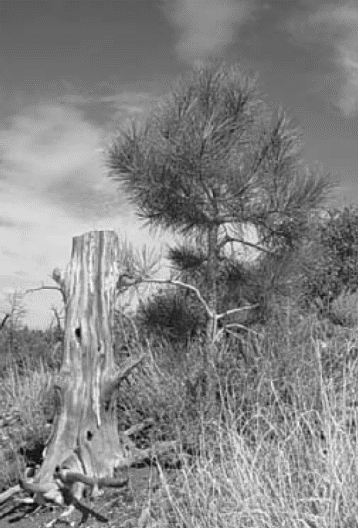 Lama Goes To Market
Lama Goes To MarketAfter Kathy and I attended several organizational meetings this past winter and spring, it was exciting to be 'on the ground floor' of the new Questa Farmer's Market this summer. Each Sunday, we'd go set up our booth, evolving from a comedy team like Lucy and Ethel struggling with our canopy parts in the grocery store parking lot to a smooth team of booth organizers, growers, bakers, and candle/cream/ lipbalm producers, interacting with our customers, and enjoying the camaraderie of fellow marketers. It was a delight getting to know our neighbors and swapping stories and bread and produce with others passionate about community building and organic food.
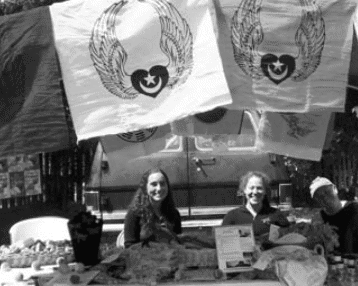
As luck would have it, our booth wound up right next to where most weeks a musician (including fiddle-playing Meredith with her beautiful voice and banjo-playing Mia with HER great voice!) or group of musicians would play and sing to make the time zip by. It's been so inspiring to develop relationships with these folks, with their wealth of knowledge and stories about planting, harvesting, baking, and just living in beautiful northern New Mexico. As a result, I've a feeling that, more and more, Lama's produce will be coming directly from our own gardens and greenhouses as well as from local farmers like Daniel Carmona of Cerro Vista Farm, who gave such a fascinating and inspiring presentation during "Build Here Now, Grow Here Now, Live Here Now".
We really lucked out with this summer’s rains, and consequently we were able to enjoy lots of homegrown produce all summer long, and we still have root crops going strong! During the cold season, we're looking forward to visioning about which crops to grow where, how to perfect our 'value-added products' like candles, and ways to expand the number of people enjoying the new Questa Farmer's Market. See you there next summer!
Lynn Farquhar
Lama Alive will be on-line soon!
Go to
http://www.lamafoundation.org and click
on the Newsletter Link to see the entire
December 2006 Newsletter, in color!
Additional color photos are also available
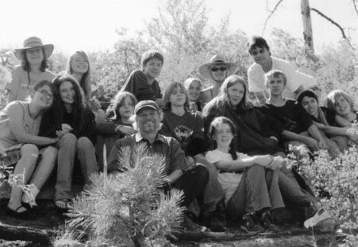 Church of Conscious Harmony
Church of Conscious Harmony
From a conversation with Youth Minister Don HaleThe Church of Conscious Harmony in Austin, Texas, was co-founded by Tim Cook 18 years ago after he experienced a spiritual awakening during a
Ram Dass retreat at Lama Foundation. Its Abba is Father Thomas Keating, a monk, author, and founder of the world-wide ministry of Contemplative Outreach. Church of Conscious Harmony (CCH) youth and chaperones first came to Lama in 1997, a year after the Hondo Fire, in response to requests for help with rebuilding. Another group returned to Lama in 2001, and CCH youth have returned every summer since that time.
The journey is a multi-leveled pilgrimage, an opportunity to go more deeply into prayer and to see prayerfulness modeled by practitioners from different spiritual traditions and walks of life. To experience the open-hearted welcome and acceptance of the Lama community in which the youth feel safe and held has a much greater impact on their lives than simply reading about religion. Lama has become a second home.
Youth Minister Don Hale explained, “The youth prepare for every pilgrimage by raising funds through the sale of calendars, peaches, baked goods, and an annual spaghetti dinner attended by over 100 people, but we try not to get lost in the fundraising. The week before our departure, we participate in an all-night vigil with centering and contemplative prayer. Each participant contributes to a group aim. This gives the youth a sense of the trip and an opportunity to deepen both individually and in their relationships with one another. Our departure is blessed by our pastor, Tim Cook and his wife Barbara, family, and other community members.”
“Our first ‘official’ stop is the cross overlooking Santa Fe, where we do a sit. We spend the night in Espanola and do morning devotion at the Hanuman Temple in Taos. One of our goals in taking the centering prayer to different sites is to realize that although external environments change, the inner environment is the same.”
“We come to Lama to serve and work with the community. Through the relationships that form with members of the summer community, the youth have an opportunity to see how they affect others’ lives. Watching the Lama Community open to them is an experience they don’t get anywhere else. They feel the ancient wisdom of the Mountain and the natural world that surrounds Lama, manifested in members of the community, and come to realize that this wisdom is part of their nature as well. At Lama, they experience a world that is slower – in a different rhythm – than the world from which they have come and so they learn to match rhythms with those around them.”
Mountain LearningWe arrived at Lama with the air of hustle hovering on our shoulders. We were excited and nervous to see just how a course entitled “Contemplation and Sustainable Design” would unfold on the side of a high-desert mountain.
Under the guidance of Professor Paul Wapner, seven American University graduate and undergraduate students left the walls of our Washington, D.C. campus this summer and embarked on the adventure of a non-traditional class. The course syllabus had prepared us for training in natural building techniques and global environmental politics discourse. Our days were spent mixing cob and slathering it onto the blossoming Cottage Industries Studio, reflecting on global issues within a personal context, and incorporating all of this into artful journaling. We soon learned that what was not on the syllabus offered an equally important lesson: Seva, tuning, lodges, Shabbat, yoga, sweat, tears, connections to the soul, sharing meals made with intention, looking for thunderheads, exploring the raspberry trails on the land, sleeping hard, and living lightly.
We left Lama with song, presence, and love in our hearts. We are fortunate to have lived a bit of Lama’s place, people, and spirit. The residents, summer stewards, and other visitors transformed a “class” into a course on the intricacies of life. Thank you to all of our Lama teachers!
Leah Baker ( AU student of Paul Wapner)
What is Centering Prayer?Prayer is our relationship to God. Centering Prayer is a method of exercising this relationship - it provides access to deep forms of prayer known in the tradition as contemplation or contemplative prayer. This prayer may be described as silent communion with God. It is the core practice for spiritual growth and transformation.
We may think of prayer as thoughts or feelings expressed in words. But this is only one expression. Centering Prayer is the opening of mind and heart - our whole being - to God, the Ultimate Mystery, beyond thoughts, words and emotions. We open our awareness to God whom we know by faith is within us, closer than breathing, closer than thinking, closer than choosing - closer than consciousness itself. Centering Prayer is a process of interior purification leading, if we consent, to divine union.
Centering Prayer is not meant to replace other kinds of prayer; it simply puts other kinds of prayer into a new and fuller perspective. During the time of prayer we consent to God's presence and action within, while at other times our attention moves outward to discover God's presence everywhere.
Centering Prayer, one of the two core teachings upon which Church of Conscious Harmony is based, is designed to give us a direct experience of God's presence and action in our lives.
Reprinted by permission from Church of Conscious Harmony
http://www.consciousharmony.org
Lama Foundation will be hosting a
“Contemplative Prayer Silent Retreat”
The tentative dates are July 10, 2007 - July 19, 2007.
Look for it in our 2007 Summer Brochure.
American University Workshop: Contemplative Sustainable DesignJuly 29-August 13, 2006
We came to the Mountain to reflect on and even try to solve some of the world’s most challenging problems. We wanted to learn how to respond to climate change, loss of biological diversity, increasing scarcity of fresh water and the overall degradation of the earth’s air, water, soil and species diversity. As students of global environmental affairs at American University, we understood that our current ways of life are unsustainable. We wanted to know how to steer ourselves, our nation, and the world in new, more hopeful and sustainable directions.
We came from Washington DC, arguably the belly of the beast. We were used to trying to change the world by staring at computer screens and competing against each other and many others to win the attention of policy-makers or, really, anyone who would listen. Many of us were worn down by the frenetic politics and the city itself. We came to Lama for refuge and to experience a model of sustainability. Lama was our summer laboratory for experimenting with ourselves and our grand ideas of how to make the world a better place. When we arrived, I asked Das what to expect. He replied, “Well, let’s see what happens.”
Things, in fact, did happen. We helped build the new Cottage Industries Studio with mud, straw, and, as Austin always reminded us, love. We sat in the prayer room and listened to our breath, heart, and souls. We practiced yoga, walked in the woods, stared out across the gorges, valleys and mountains, and shared our fears and thoughts about global environmental problems. Most of all, and most rewarding, we joined the community.
Tuning, eating, talking, dancing and smiling with the residents and summer staff is a profound experience. Lama continues to be a place where people come together to support each other’s journeys and the community’s unfolding, and this proved to be our biggest lesson about sustainability. We learned that, more important than all the technical know-how revolving around environmental well-being, at the root of things is finding a way of living together that honors each other’s souls, cultivates a sense of caring about each other, and harmonizes our lives with the natural world.
At the end of our stay, as the shuttles left the mountain to the sound of the conch shell, these kinds of things started to sink in and we were able to appreciate the deeper meaning of sustainability. We did so, it turns out, by becoming different people. We arrived as individual students dedicated to environmental protection. We left as a thankful community more understanding of ourselves and more supported in our political and spiritual aims. Over our three weeks at Lama, we grew thankful for the land, for the opportunity to live alongside the wise folks of the Mountain, and for the transformative powers that flicker at the center of life.
Paul Wapner
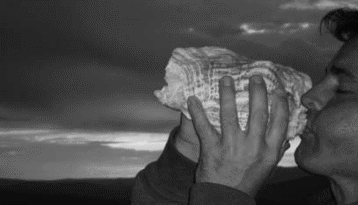
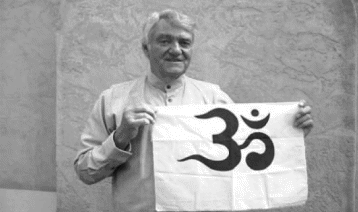
Ned O’Malia
Three Credits and an OuthouseThere is a long familial bond between Lama Foundation and the Honors Program of the University of New Mexico. For almost 20 years, Lama has been host, academic center, and spiritual guide to an unusual Honors seminar entitled: Sacred Sites of Northern New Mexico. Using Lama as a home base, this ten-day, three-credit seminar allows fifteen students to experience Lama and visit other spiritual communities.
For me, there is no greater joy than driving to Lama during Community Camp, wondering who will be there. We enter into whatever rhythm of spiritual life we encounter. Once, we arrived on a day of silence when an orientation and land tour were conducted by use of writing on a clip board. We have arrived several times to be greeted by the spiritual chords of Stew Baba Britton’s saxophone kirtans. We once arrived to the music of three Iranian men from Denver playing archaic Iranian instruments most of the night in the Dome.
Sacred Sites has a Web page (
http://www.unm.edu/~nomalia/) which relates some of the history of this seminar. In time we will have photos of each of the seminar years. There is a section entitled “Sacred Characters” to honor the people we meet in our travels who have had a profound effect on us. This year at a roadside picnic stop near Abiquiu, we met Roy C. Johnson, a cowboy traveling with his horse and bed roll from San Antonio, Texas to Spokane, Washington. He had already been on the road for 71 days and expected to be riding for another 6 months. His wife told him he was not the man she had married and that he should go find that man. Roy was on as true a Yantra as any soul flying to India. Fatima Rigsby is one of our favorite “Sacred Characters.”
One of my greatest pleasures in teaching Sacred Sites has been seeing the familiar through the new and enthusiastic eyes of students. It is a tradition that we stop in the lower parking lot and walk slowly and consciously in silence up the longest route to the Dome. In the Dome, we circumambulate clockwise seven times and then sit in a circle to begin our orientation. The experience of seeing this spectacular building on the top of the wide meadow, then feeling the wooden floor, danced on and prayed over so many times, creates an electric wave about all of us.
In the hallowed tradition of Seva, the Sacred Sites students became quite good at building and refurbishing outhouses in the very beginning of this long union. We would usually tackle one of the hermitage outhouses, dig a new hole in rocky ground, move the outhouse, replace worn boards, and paint it with the brightest paint we could find. We took endless photos of these grand creations, and I once showed former Governor Jerry Apodaca photographs of the seminar. When he asked about the outhouse I told him that we build them as part of the seminar work. He replied, “Finally a resume item worth something.”
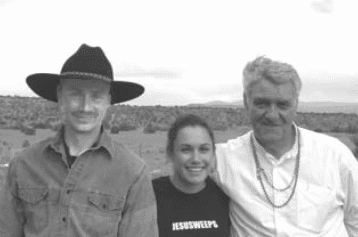 Roy C. Johnson, (Cowboy), Ambrosia Ortiz (Teaching Assistant 2007), Ned O'Malia
Roy C. Johnson, (Cowboy), Ambrosia Ortiz (Teaching Assistant 2007), Ned O'MaliaOur grandest Seva was moving building materials, including a wood stove, to the High Hermitage. Plans were under way for this movement, which included talk of a helicopter lift, when I chimed in that I had college students eager to work. We placed the cast iron wood stove in a wheel barrow, and in the Chinese style, I attached three ropes to the front of the wheel barrow so that the stove was pulled and pushed up the long rocky path to the High, and the old one brought back down.
Even when I think I am beyond being surprised by student reactions to Lama, I am surprised again. A young woman boldly stated that she enrolled for this seminar because it was shorter than a semester and looked easy. After a week, I met her one night crying, saying she had just called her mother and had asked to be baptized in their family church. If there is a trend with my students at Lama, it is that they reawaken to the discarded religion of their childhood. Now they see the adult version of that teaching with its complexities, mysteries, and opportunities.
Sacred Sites is not all outhouses, sweat lodges, teepees, or Willie’s wondrous cinema. Each student writes a research paper, which is shared with the class. Each student creates an annotated workbook of writings, musings, questions and 25 images, which can be photographs, drawings, found art, and once a bone fragment. These workbooks are a gift to that student later in life. They are a record of a moment in their lives, which most will never experience again. Some of these workbooks are of museum quality with high imagination and huge creativity; some are merely adequate to meet the goal.
I am often surprised by where and when the seeds planted during this seminar come to sprout. In May of this year, I spent an afternoon in the Maqbara reading the hermit journals. One stated, “I first came here twelve years ago with a college class; I have gone downhill since that time. I am back to recover something.” He signed his name, which I immediately recognized, as he was somewhat of a pain in the neck. Of all the people on all the seminars, how he found his path back here still amazes me. Plus, as he was carrying his Blackberry with him, he was able to contact the Hermit Master Krishna Das through the Internet for his daily supplies. Wow!
In reflection, I am grateful that over 300 college students have felt the heartbeat of the Lama Foundation, walked the meadows, drank tea, danced in the Dome, cooked silently in the morning kitchen, and met great spiritual beings. There is no measure of how the Lama experience will translate into their lives. I am aware of the smiles shared and the tears dropped. I have felt heart spaces open in many students. I am thankful to have been a part of this Lama Foundation – Honors Program seminar. I am thankful to have learned something from each student - about them and about me. With the grace of the Goddess, may it long continue.
Thank you Lama Foundation! Ned O’Malia
Maqbaras on Lama MountainMurshid Samuel L. Lewis’ Maqbara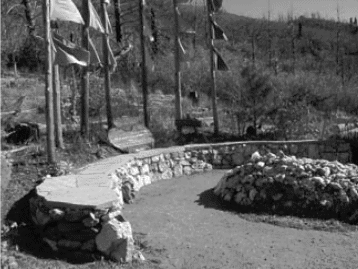
Samuel L. Lewis was Lama’s first “teacher”. Following is an excerpt from his diary of that time (1970): “Here I am in a spiritual commune way up in the Rockies (Lama), where they practice, practice, practice what others preach, preach, preach. It is marvelous. It is the New Age. It is the New Age without any recent Messiahs. Just human beings who demonstrate love and humanity, and worship according to the forms of all religions and don¹t waste time on endless lectures.”
Murshid Sam was buried on Lama Mountain in the deep of winter in January 1971. The Maqbara of Murshid Samuel L. Lewis, like the shrines of Sufi teachers in the East, is a place of Baraka, of blessing, of peace. It is a place of pilgrimage where we can reconnect with spiritual reality, recharge our batteries, and seek an answer to life’s problems. Lama celebrates Murshid’s birthday on October 18th and his Urs (day of passing, or wedding with the Beloved) on January 15th. All are welcome!
Funded by Sufi Ruhaniat International, work was done this past summer to improve the seating around his Maqbara. The crescent above the grave was expanded and new stones were laid along the top. The area can now seat 25 to 30 people.
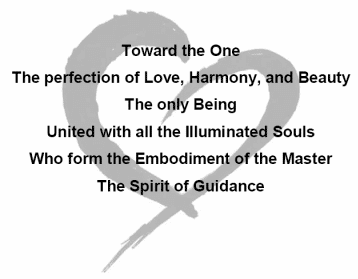 Toward the One
Toward the OneThe perfection of Love, Harmony, and Beauty
The only Being
United with all the Illuminated Souls
Who form the Embodiment of the Master
The Spirit of Guidance
Murshida Vera Corda’s Maqbara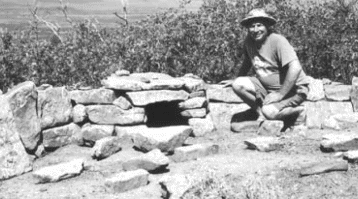
This summer a group of volunteers from the local community, lead by Rahaman Brown worked on a beautification project at Murshida Vera Corda’s Maqbara.
Excerpted here are a few words Shabaz Juan Lopez shared about the project: “(The) volunteers lovingly hauled over two tons of rock, stone by stone, from the base of the trail...to the Maqbara site. It is quite steep... The cement used was made with rainwater (gathered from the roof of the bench shelters at Murshid Sam’s Maqbara up the hill)... The cookie jar urn (with Murshida’s ashes)... is now under the floor of the little grotto in the center of (a stone) crescent... There is still work to do. The monument still needs some finishing details. The path and landscape will be (improved) and two beautiful benches (made by John Murray who built the bench shelters at Murshid Sam’s Maqbara as well as the Maqbara hermitage hut) will be set (in place). The floor and walls of the small grotto will be decorated with (quartz) crystals being collected... Hopefully the honoring of our teachers will carry on the four winds to the highest heaven.”
This project (materials and food for the volunteers) is being funded by donations to Holistic Human Development, Inc., a trust set up to further the work of Murshida Vera Corda. Contact them c/o Zahira Rabinowitz (mzahira@ comcast.net) (707) 763-6078.
Pilgrims are welcome to visit both Maqbaras any time.
Please call for road conditions.
